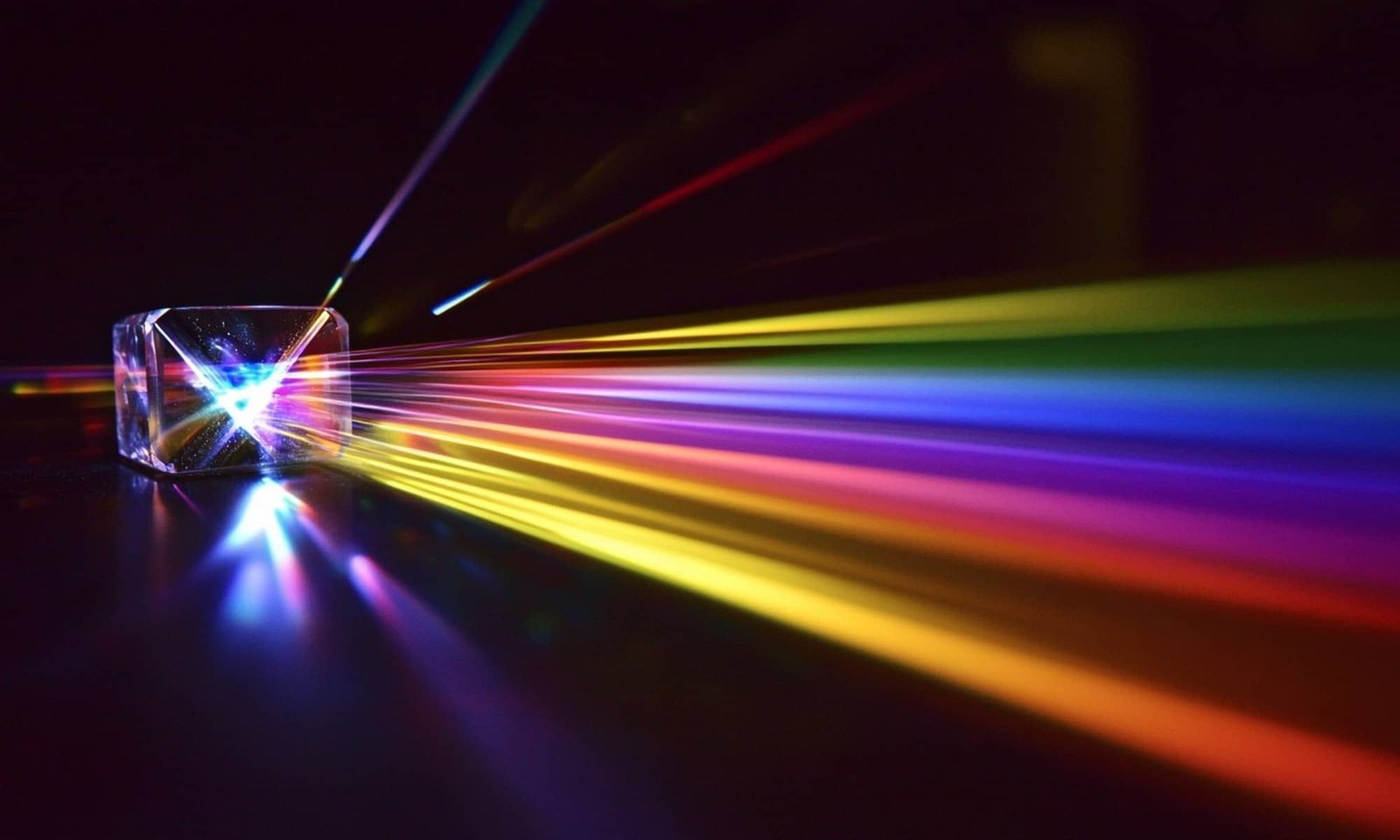White light can be defined as the combination of all colors within the visible spectrum. It is characterized by its ability to render a broad array of hues perceptible to the human eye. The primary colors of light – red, green and blue – combine in equal measure to form white light. This phenomenon can be observed in various light sources, including the sun, incandescent bulbs, and light-emitting diodes (LEDs).
The sun, being the most significant natural source of white light, emits a wide spectrum of wavelengths. When sunlight passes through a prism, it disperses into a spectrum of colors, illustrating how white light is composed of red, orange, yellow, green, blue, indigo, and violet. This dispersion occurs because different colors of light travel at different speeds when passing through the prism material, leading to the perception of various colors.
Incandescent bulbs function by heating a filament inside the bulb until it glows, producing white light as a byproduct. The light generated is a mix of various wavelengths, resulting in the emission of an extensive range of colors. Similarly, LEDs operate differently; they generate light through electroluminescence, wherein electrons recombine with holes within the device, releasing energy in the form of light. A combination of different colored LEDs can effectively produce white light when mixed together.
Furthermore, understanding how our eyes perceive white light involves various scientific principles. Our retinas contain photoreceptor cells – cones that are sensitive to different wavelengths of light. When these cones detect white light, they send signals to the brain, allowing for the interpretation of the multiple colors that make up the light. The integration of these signals results in the full color spectrum, emphasizing that white light is not merely a singular entity but rather a harmonious mixture of multiple colors. The interplay between light sources and our visual perception is fundamental to our understanding of white light.
“I think the end is endless. It’s either a big black hole or a big white light or both together. But it’s totally meaningless, because even if someone would explain it, I wouldn’t understand it.”
– Yehuda Amichai
The Science Behind Color Mixing
The phenomenon of color mixing is rooted in the physics of light, particularly in how various wavelengths interact to create a perceived color. When it comes to light, the additive color mixing process is fundamental in demonstrating the creation of white light. This process involves the combination of different colors of light rather than pigments. The primary colors of light – red, green and blue – play an essential role in this mixing method.
When red, green, and blue lights are combined in equal proportions, they produce white light. This principle operates on the premise that light, unlike pigments, combines by adding wavelengths together. For instance, if one were to shine a red light and a green light together, the overlap of these two colors results in the perception of yellow. Therefore, the combinations of these primary light colors can create an entire spectrum of colors. This interplay can be observed in everyday occurrences, such as a rainbow or the use of prisms.
Rainbows are a splendid example of natural color mixing, illustrating how sunlight refracts through water droplets in the atmosphere. As the light passes through the droplet, it bends and separates into its constituent colors, creating a visible spectrum. Prisms similarly demonstrate this light behavior, providing a visual representation of how light can decompose into individual colors when refracted. This showcases the scientific mechanism behind additive color mixing, reinforcing how our understanding of light and color influences various applications, from digital screens to stage lighting.
The synthesis of red, green and blue light forming white light not only reveals the interactions of light but also showcases the foundational elements of color perception in our visual world. This principle is essential in modern technologies, including digital displays and theatrical lighting, where precise color manipulation enhances visual experiences. Understanding these mechanisms deepens our appreciation of the intricate relationship between light and color in both natural and artificial environments.
Applications of White Light
White light, defined as a mixture of all colors in the visible spectrum, plays a crucial role in various technological applications and artistic endeavors. The advent of advanced lighting technologies has revolutionized the way we utilize white light for practical purposes. Notably, light-emitting diodes (LEDs) have gained prominence due to their energy efficiency and long lifespan. This technology allows for the development of versatile lighting solutions in both residential and commercial settings. Similarly, laser lights have transformed applications in fields such as telecommunications, medicine, and entertainment. These innovations highlight the importance of white light in enhancing functionalities, efficiency, and aesthetics in our daily lives.
In the realm of art and design, white light becomes an essential tool for artists to create captivating visual experiences. Artists often use it to manipulate environments and evoke specific emotions. For instance, installations that employ white light can drastically change perceptions of space and enhance the viewer’s experience. Through careful consideration of intensity, angle, and color temperature, artists establish focal points and create dramatic contrasts. Such techniques are apparent in contemporary art, where light installations challenge traditional mediums and encourage innovative interactions with audiences.
Moreover, white light plays a significant role in photography and cinematography, where it serves as a standard reference for color accuracy. Photographers and filmmakers rely on various lighting setups to achieve desired effects, relying on the properties of white light to accurately render colors and details. Soft white light can create a natural appearance, while harsher light can produce dramatic shadows and highlights. This adaptability reinforces white light’s significance in visual arts, making it an indispensable component for artists aiming to enhance the realism of their work and the emotional impact of their narratives.
George Michael
George Michael, a pop legend, captivated audiences with his powerful voice and poignant lyrics. Rising to fame with Wham!, he later launched a stellar solo career, cemented by his album Faith, featuring hits like Careless Whisper and Father Figure. His music blended pop, soul, and R&B, earning him two Grammy Awards and global acclaim. Beyond music, his stance on social issues and message of self-acceptance resonated deeply. Even after his passing in 2016, his legacy endures, inspiring generations with his artistry and values.
The Impact of White Light
White light serves as a crucial element in our everyday experiences, impacting our mood, perception, and productivity in various environments. It is composed of all colors in the visible spectrum, which allows us to perceive our surroundings in full detail. The presence of white light, particularly in our homes and workplaces, plays a significant role in shaping our psychological and physiological responses.
Natural sunlight, as the primary source of white light, has been shown to enhance well-being effectively. Exposure to natural light stimulates the production of serotonin, often referred to as the “feel-good” hormone, promoting a positive mood and enhancing emotional stability. In contrast, artificial white light sources, such as fluorescent or LED lighting, can create varied atmospheres and have distinct effects on our emotional states. While some artificial options may mimic natural light, they often fall short in producing the same level of emotional benefits, impacting overall health and well-being.
Moreover, the quality and intensity of light in work environments can significantly influence productivity. Studies indicate that well-lit spaces contribute to better concentration, improved performance, and enhanced creativity. Conversely, inadequate or harsh artificial lighting can lead to eye strain, fatigue, and decreased motivation. As such, it is essential for both home and workplace settings to optimize white light conditions to foster a more conducive atmosphere for productivity and comfort.
To maximize the benefits of white light, consider incorporating a combination of natural light during the day and strategically placed artificial lighting at night. Utilize light-colored walls and furnishings to reflect light and make spaces appear brighter. In workspaces, adjustable lighting can cater to individual needs and task requirements. By understanding the impact of white light and thoughtfully designing our environments, we can enhance not only our productivity but also our overall quality of life.
What’s More
The posts in My Blog feature reflective, story-driven pieces rooted in personal and societal insights.
The topics in My Interests explore abstract, philosophical ideas and their cultural and societal impact.


